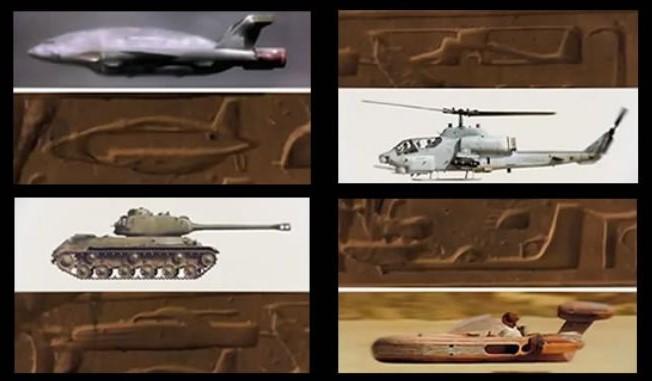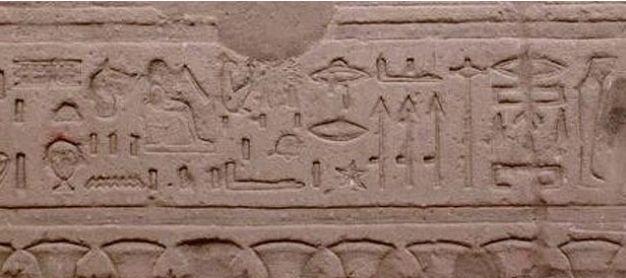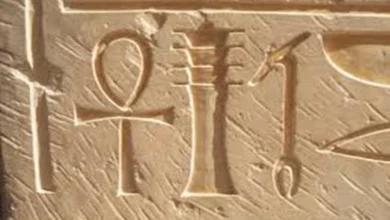Did aircraft exist in ancient Egypt?

Modern historians strongly reject the hypothesis that airplanes or aircrafts existed in ancient times. It would demolish basic concepts of the past civilizations, poorly prepared technologically, but in that case, would ancient texts and hieroglyphs speak of this possibility? We examine the findings from Ancient Egypt.
Many of the finds discovered in ancient times have not yet found an answer to their enigmas. We wondered if the Wright brothers were the ones who really came to conquer the skies for the first time by making the first flight come true. Perhaps, our remote ancestors had a much more advanced technology than we imagine, and than we could even materialize in our minds today. I propose, with evidence and facts, the following hypothesis:
A small wooden model is on display in a museum in Cairo. Nobody doubts what it represents: a simple glance is enough to distinguish the wings, the drift plane, the tail, and the solid and bulky body of some airplane type.
This model’s body has a slightly less than 15 cm length, and its wingspan was slightly greater than 18 cm. It has been built with sycamore wood, very light, and when you shoot it into the air with your hand, it will fly a short distance.

Seeing a model like this in a science museum would not have been a surprise when it comes to science or modern technology museums. However, this model occupies a privileged place in the Museum of Antiquities in Cairo and is dated around 200 BC.
This antique piece is a notorious challenge to our ideas about the development of technology. It is one of the innumerable enigmas that reframe the discussion about our ancestors’ scientific and engineering knowledge.
In 1898 (5 years before the Wright brothers successfully carried out their first powered flight), this model was found in a tomb in the ancient Egyptian city of Saqqara, but nobody related it to the idea of artificial flight. It was stored in a box that contained figures of birds. It was rediscovered by Dr. Kahlil Messiha in 1969 and was astonished, given its obvious resemblance to a modern aircraft.
A committee of expert archaeologists and aeronautical engineers studied the model. They highlighted the arch of its wings and the downward inclination of the ends of the wings, which provides stability. They concluded that the part was a scale model of a full-size airplane.
The ability to withstand the engine load and fly like this and at low speed, between 65 and 100 km/h, is due to the curious shape of the wings and their proportions: the wings are inverted, which is called a “Reversedihedral wing”.
A similar type of curved wing is used on the Concorde, and it is they that give this aircraft maximum lift capacity without slowing it down. It must have been a “motorized glider”. It could have been powered by a rear-mounted engine, in the spot where the plane’s tail now appears broken.

Note that the Egyptians made scale models of virtually every project and building they planned to build. The committee is so convinced of their importance that they placed it prominently in the Cairo Museum. More than a dozen similar “gliders” were found in other graves. Could they really be models of old airplanes?
There have never been remains of airplanes or parts of airplanes found among Ancient Egypt’s ruins, but the mysterious sculptures found and clearly seen in Abydos’ temple could prove the opposite.
The temple of Abydos is on the River Nile banks, specifically 100 miles from Luxor’s city; it dates from the year 3150 BC and is built by Pharaoh Seti I. It was believed that it was sacred to the fallen angels of Osiris ( quite suggestive regarding the alleged aircraft being the theme), who, according to the story, was killed by his brother, another God known as Typhon, who later arranged for his body to be scattered throughout Egypt.
In 1948 a panel on a temple wall was photographed by a group of Egyptologists. It was discovered showing below the contained images in relief, others that resembled modern aircraft such as the striking resemblance to a helicopter (type between Apache and Black Hawk of the USA). Others could be interpreted as airplanes, hovercraft, or saucers, some of them could even be seen flying engraved on the reliefs. There is also a kind of boat, a luxury yacht from the modern era.
When the photos were first made public, they were supposed to have been digitally altered to create a sensational false alarm. But the truth is that they had only been retouched to show more clearly the possible aircraft.
Perhaps appearances are deceiving; however, the official position of archaeologists is that the carvings are strange palimpsests, that is, the result of two or more overlapping carvings that combine to make it look like something else, arguing that the ancient aircraft (s) are not they are more than combinations of overlapping hieroglyphs. Another pharaoh, Ramses, made modifications to the Abydos Temple when he received it, however in a meticulous review of the glyphs on the walls, it can be seen in detail that the carving of the figure that resembles a helicopter is very precise, leaving endless open assumptions that feed each time plus the idea about advanced ancient technology.





